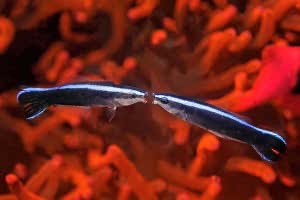
The Fish Know Themselves
A battle of the taxa in the arena of behavioral cognition
By Amielle Moreno PhD.
Kohda et al. 2018 I’m Looking at the Wrasse in the Mirror…
Back in 2018, some mirrors were placed against the glass of fish tanks. At first, the fish reacted antisocially to what might have appeared to be invading fish. They put on the toughest looks; opening their little mouths in a terrifying ‘o’ shape. When no threat was forthcoming from these intruder fish, the aggressive behavior subsided. Next, the fish began acting in ways not observed before the mirrors. Like a Groucho Marx sketch, the fish began to repeat abnormal and idiosyncratic behaviors near the mirror. Frequently revisiting the mirror to view looping and upside-down swimming, perhaps they recognized their reflections. Or maybe they think they have an imitating companion? We don’t know; they’re fish.
These are the first two stages of the mirror self-recognition (MSR) test and these little fish are doing surprisingly well under the watchful eyes of researchers at Osaka City University. Passing the third stage elevates the test taker to a level of cognition previously obtained only by a small number of animals. Researchers in the Jordan laboratory set the stage by first placing a mark on the fish, such that it’s not tactile and can only be seen using the mirror. This foreign mark primes the subject to display a hallmark of self-recognition; using the mirror to perform self-directed behavior in order to discover what this fucking mark is.
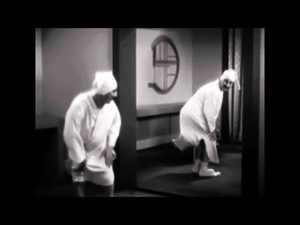
This work is a part of the ongoing quest of cognitive behavioral researchers to assess “the intentionality of nonhuman animal behaviour” (Kohda et al., 2019). A bead of plastic was injected subcutaneously on the belly of the fish. This left a brown dot that the fish could only see with the aid of a mirror. The researchers then recorded how the little subjects responded to the new augmentation and low and behold; the fish proceeded to scrape those areas against the gravel of their aquarium, perhaps to remove the coloration.
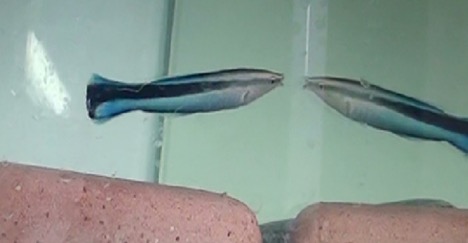
Witnessing those gravel belly rubs, must have been a thrill for the Jordan laboratory. It’s always exhilarating, when you silently witness an animal processing the world in the way you predicted it would. But with those little rubs, these fish uncovered a flawed assumption in behavioral research and awakened the primate research’s old boys club.
These fish are called cleaner wrasse (pronounced RAS), Labroides dimidiatus. They swim everywhere from the Red Sea to the coral reefs of French Polynesia. If I may overly personify for a bit, they’re scrappy little fellas with the capacity for advanced social behavior. You see, cleaner wrasse eat parasites that reside on other fish species. To pluck the small brown parasites and dead skin off of very large fish, you have to be charming or at least clever. Cleaner wrasse have demonstrated the ability to recognize old “client” fish from new comers. They’re also capable of determining what is or isn’t known by other conspecifics.
And in Kohda et al.’s 2019 original research article, they are joining the ranks of other organisms who passed the MSR test. The smarty-pants club includes animals like elephants, dolphins, horses, magpies, higher apes, and two-year old humans, though some more stringent test administrators limit the admittance to chimpanzees and humans.
Kohda and other authors in the Jordan laboratory reported these results to PLoS Biology for publication in July 2018. In January 2019, they were published in a paper titled If a fish can pass the mark test, what are the implications for consciousness and self-awareness testing in animals. It’s purely speculation, but since the Kohda paper was submitted to the PLoS Biology journal in July 2018 and not accepted or published until 2019, there might have been a hell of a lot of back and forth between the editors and researchers. This might be because the stalwart king of primate research, Frans de Waal, presides on the editorial board. After a life time of advocating for proper interpretations of animal cognitive research, Dr. de Waal was presented evidence that where monkeys, pigs, dogs, pandas, and parrots had all failed to pass the three stages of MSR… A fish past the mirror self-recognition test.
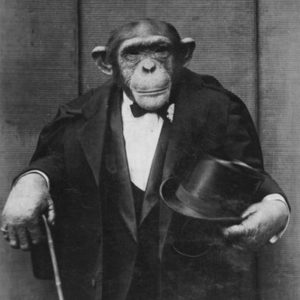
Along with their surprising results, Kohda et al. didn’t shy away from questioning the framework behind this long-standing test. The authors presented two potential lines of analysis:
1) If fish are self-aware (as shown by passing the mark test), what does that tell us about our understanding of animal intelligence?
2) If this behavior has a basis in cognitive processes other than self-recognition, what does this mean for the interpretations of the mark test as a metric for animal cognitive abilities?
The authors go on to clarify that they’re not banging on the door to the Self-Recognition Club, demanding fish admittance. In fact, they don’t believe their findings “should be taken as evidence of self-awareness in the cleaner wrasse.” Instead, they take the hair of ‘self-awareness’ and split it into 1) a theory of mind called self-awareness and 2) observation of the physical self and perceiving it as part of the body of the observer.
Here’s a clumsy analogy: suppose an animal’s view of their body is blocked, accept for their tail protruding from the other side of the obstruction. The animal’s recognition of their tail as part of themselves, wouldn’t be theory of mind. Recognition of the tail or viewing oneself in the mirror would just be a form of incorporeal proprioception, connecting a visual input or a reflection with one’s body.


The fish scraping behavior is as self-directed as it can get in non-armed or -legged animals. And hey, if scraping behavior was good enough for everyone’s favorite sexy marine mammal, the dolphin, then saying it’s not good enough for fish would be “taxonomically chauvinistic” according to Kodah et al. Strengthening their finding’s bulwarks, they said resistance to their findings would “risk introducing subjective taxonomic biases, setting moving goal posts and precluding scientific comparisons among certain taxa.” These fish succeeded alongside other taxa in a behavioral arena heavily populated by mammals. Their little ‘o’ mouths charged their doubters of bearing the label of ‘anti-fish fascists’… … fishcists.
Frans B.M. de Waal penned a primer to accompany the issue with the fish paper. In it, he gave ground by pointing out that the mark test is currently binary and suggested the need for “a more gradualist model of how animals construe the self and respond to mirrors” (de Waal, 2019). He then began slashing at the methodology and conclusions of Kohda et al.
Kohda et al. had equated the mirror adjacent abnormal behaviors with self-recognition, while de Waal saw this and other conclusions as “generous interpretations”. As quantified, de Waal was unconvinced these observations indicated the fish knowingly played with their own reflections.
De Waal believes these findings “suggests a more intermediate level of mirror understanding.” Even Gallup, who invented the MSR test using chimpanzees in 1970, was pulled out of cryostasis to write an article dissecting the continually flawed interpretations and applications of his test (Gallup, 2020).
In-between the lines of academic politeness, read the message “you can’t use this test, stay away from mirrors.” And then I learned, don’t piss off fish people. Do you know how many fish there are? Way more fish than chimpanzees.
Kohda et al. doubled-down on the mirror test.
Kohda et al. 2022 Escape From the Planet of the Apes
Kohda et al. assiduously clapped back with an updated article presenting “further evidence” in February (2022). They ran a myriad of new tests where they “reiterate the conclusion of the previous study that either self-awareness in animals [YA BITCHES] or the validity of the mirror test need to be revised.” (Emphasis and “YA BITCHES” added).
“In no case is an animal activity to be interpreted in terms of higher psychological processes if it can be fairly interpreted in terms of processes which stand lower in the scale of psychological evolution and development.”
~C. Lloyd Morgan~
With the canon of the 19th-century psychologist C. Lloyd Morgan in mind, Kohda et al. addressed as many criticisms lobbed at them and then some, in their new publication. This included, but was not limited to:
1) They increased their sample size of fish and all mirror experienced fish attempted to scrape the fake parasite.
2) They diversified the implant colors. Critics found the evidence in the original Kohda et al. paper showing that clear injections did not increase scraping behavior unconvincing, perhaps because of the small sample size. One sticking point was that marks made on the fish could have a physical sensation that made them more salient than a truly tactile-less mark. If so, this sensation could drive the investigation and recognition of the mark in the mirror. So, you know what Kohda et al. did? Yellow and blue as well as the ecologically relevant black/brown were now included in the study! Wrasses only scraped if it was the ecologically relevant brown color…. Wait, what’s the opsins expressed by these fish?… NEVER MIND! I’ve already read four papers on this subject, I’m not reading anymore!*

3) To further their evidence of marks being non-tactile, a group of wrasse received deeper implants. The deep marks made every fish itch, suggesting the superficial marks must not bother the animals enough to scrape. It’s the visual cue that’s necessary.So, get out of here with your criticism based on a rhesus macaque study with the electrophysiology head implants (Rajala et al., 2010)! Those implants were highly invasive and the study had only four subjects!
4) De Waal had postulated that the fish might believe their reflection is another individual who has a parasite mark. Like when you see someone with spinach in their teeth and you check your own, maybe seeing the mark triggers mark-area related behavior. In the new experiments, the mirror experienced fish were presented with other wrasse with markings. It didn’t initiate scrapping.
5) They, chant with me now, Moved! That! Mirror! If the mirror is moved to a different location, will the fish realize it’s still themselves or behave like a stupid macaque, unaware of spatial contingencies? Well, wrasse didn’t start attacking the newly moved mirror, out-preforming dumb old macaques (personal note, I hate macaques)!
Kohda 2022 also suggested to verify the extent that mirror experience affects passing the MSR test, more mirror-naïve chimpanzee testing is necessary. Which is a good point. In the original study cited 2433 times, Gallup only tested six chimps, and only two on their ability to identify the mark when mirror-naïve. There’s no way in academia Gallup’s original study would be accepted today, 52 years later. While evidence of chimpanzee self-awareness isn’t in question, the behavior of naïve chimps is being cited to criticize the Kodha research with little to back it up. That’s right you get back in the lab, ape researchers!
The 2022 Escape From the Planet of the Apes paper states “the combined accumulated evidence should be more difficult to be dismissed than the previous study.” They suggest more species would show evidence of MSR if the task was configured to be ecologically relevant to them.
When asked to comment on the new study, de Waal reportedly said, in “these new experiments the evidence for [mirror self-recognition] is about as strong as it can get, and moreover shows that the marks need to be ecologically relevant in that they need to be of the color that cleaner fish generally respond to.” De Waal still defends his new gradualist perspective on self-awareness, arguing that no other cognitive trait appears out of nowhere evolutionarily.
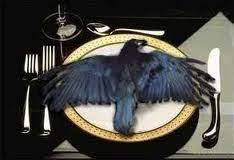
And when I’m not grinding my gears thinking about how to prove that statement on evolution wrong, others in the field of cognitive behavior are coming to terms with the new perspective that “the degree of self-awareness may well differ between species in ways that are independent of performance in the mirror test” (Kodha et al., 2022).
The quest to answer this question has a new chapter thanks to these Osaka City University researchers. Kohda and the Jordan laboratory certainly silenced the remonstrations of the primate research old boy’s club… for now.
* Labroides dimidiatus (bluestreak cleaner wrasse) Opsin Expression: I couldn’t help myself and looked up the color vision molecules (opsins) expressed in this species. According to Phillips et al. Wrasse possesses three opsins: SWS2B (purple; 421- 451 nm), RH2A (green; 516–528 nm; specifically, a duplicate version, RH2Aa with a non-specified but likely similar frequency range), and LWSE (orange; 561–562 nm)(2016). Each opsin has a peak color frequency for activity but is sensitive to adjacent color frequencies as well. The yellow and blue elastomer colors used could still be visible to the fish, even if they do not have opsins with peak activity for those exact wavelengths. It would be absurd for this point to be so easily uncovered by myself and be unknown to Kohda and the Jordan laboratory. Still, it’s my humble opinion as a neuroscientist not specializing in opsin expression, fish biology, or the physics of water vision that future experiments on color identification in the Labroides dimidiatus should use colors of orange and green visual stimuli.
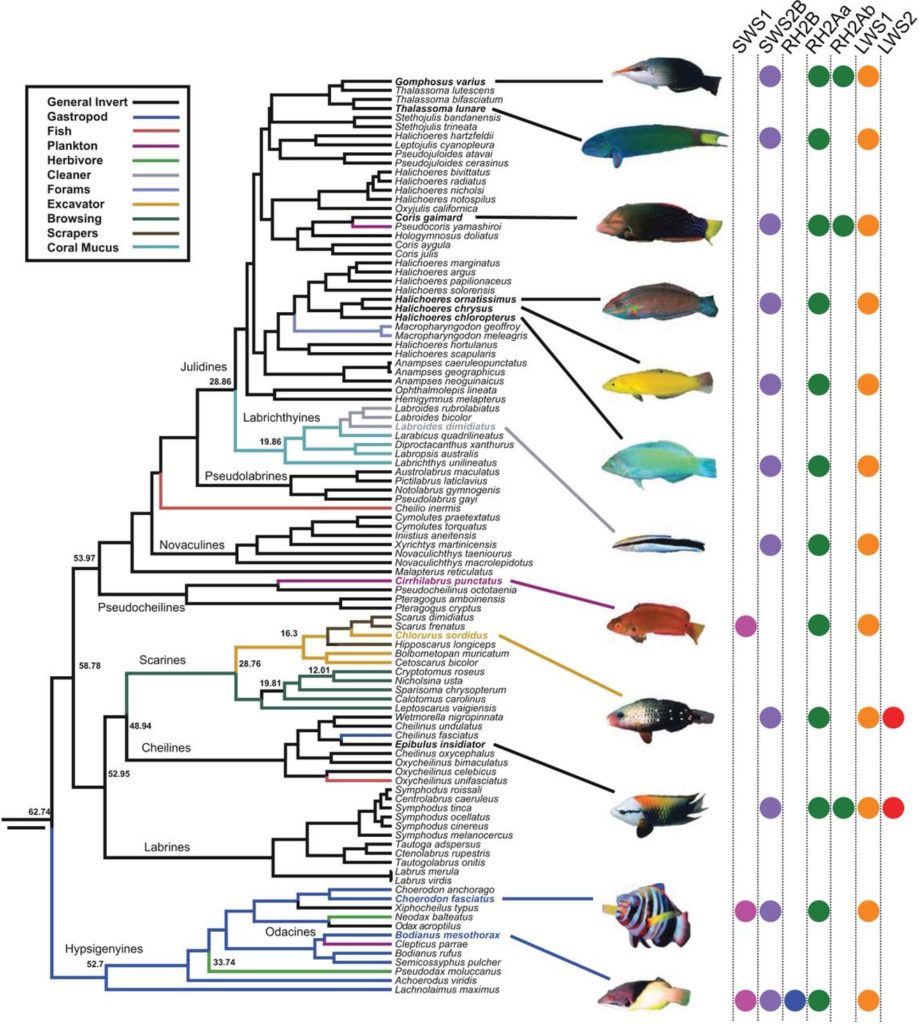
Unformatted Bibliography:
Gallup Jr, G. G. (1970). Chimpanzees: self-recognition. Science, 167(3914), 86-87.
Gallup Jr, G. G., & Anderson, J. R. (2020). Self-recognition in animals: Where do we stand 50 years later? Lessons from cleaner wrasse and other species. Psychology of Consciousness: Theory, Research, and Practice, 7(1), 46.
Gallup, G. G. (1977). Self recognition in primates: A comparative approach to the bidirectional properties of consciousness. American psychologist, 32(5), 329.
Kohda, M., Sogawa, S., Jordan, A. L., Kubo, N., Awata, S., Satoh, S., … & Bshary, R. (2022). Further evidence for the capacity of mirror self-recognition in cleaner fish and the significance of ecologically relevant marks. PLoS biology, 20(2), e3001529.
Kohda, M., Hotta, T., Takeyama, T., Awata, S., Tanaka, H., Asai, J. Y., & Jordan, A. L. (2019). If a fish can pass the mark test, what are the implications for consciousness and self-awareness testing in animals?. PLoS biology, 17(2), e3000021.
de Waal, F. B. (2019). Fish, mirrors, and a gradualist perspective on self-awareness. PLoS Biology, 17(2), e3000112.
Rajala AZ, Reininger KR, Lancaster KM, Populin LC. Rhesus monkeys (Macaca mulatta) do recognize themselves in the mirror: Implications for the evolution of self-recognition. PLoS ONE. 2010; 5: e12865. https://doi.org/10.1371/journal.pone.0012865 PMID: 20927365
Becky Ferreira Fish Might Really Be Self-Aware, New Study Finds 2/17/2022 https://www.vice.com/en/article/z3nwgw/fish-might-really-be-self-aware-new-study-finds
Phillips GAC, Carleton KL, Marshall NJ. (2016) Multiple Genetic Mechanisms Contribute to Visual Sensitivity Variation in the Labridae, Molecular Biology and Evolution, Volume 33, Issue 1, January 2016, Pages 201–215, https://doi.org/10.1093/molbev/msv213
Top ,.. top top … post! Keep the good work on !
Thanks for your blog, nice to read. Do not stop.
url thanks.
tck 188 yargıtay thanks i like it.
incir excellent post thanks i like it.
url like studies thanks
url just thanks
In all your gettings, get wisdom.